Disclaimer: I am not a medical professional. Advice given on this page is based on my personal research and experience and is not a substitute for medical advice from your own doctor. Even a seemingly safe procedure can result in unexpected harm. You can read my full disclaimer here.
IPL stands for Intense Pulsed Light. Often (wrongly) described as a laser, IPL is like a facial that uses only the power of light, not topical products, to trigger renewal in the skin. In the industry, it’s called a ‘photofacial‘ or ‘photo rejuvenation’.
Sounds space-age, right?!
IPL treats a huge range of general and age-specific skin concerns, all with excellent tolerability and affordability as compared to laser. And for the past 2+ months, I’ve dedicated myself to researching, learning and testing it out on myself to give you all the juicy details.
Let’s kick off this hefty lot of information by going over some basic colour theory.
Wavelengths and colour of light
Light is measured using wavelength. That’s the distance between the peaks of energy given off by the light. Wavelength determines the colour of light. For example, the longest light visible to us sits at around 650nm (nm = nanometres) and appears as red. Short light (~400nm) shows up as violet, and so on.
Most of the light we get during the day includes a wide range of different wavelengths and colours, which all combine together to create a neutral ‘white’ daylight.
The interaction between objects and light
Objects reflect the wavelengths that they appear to be and absorb the wavelengths that they don’t. For example, red objects only reflect the red wavelength. That’s what’s reflected back into our eye and shows up as “red”. But it will also absorb any light that’s not red and convert it to heat energy. Dark or black objects absorb most light rather than reflecting it, heating up more than a light coloured object would.
How light repairs the skin: light to heat conversion
Basically, any extremely intense flash of light supplies the skin with a large amount of energy all at once. It must go somewhere, so is absorbed by the skin and transferred into heat energy. Where it is absorbed depends on the colours involved.
Our skin surface is made up of a range of components of all different colours. The darker areas of your skin, like or hair follicles, freckles and capillaries comprising of various amounts of melanin and hemoglobin (brown and red), will absorb the most light energy and be rapidly heated up. Lucky for us, those dark parts are what we usually want to treat and remove.
The light essentially vaporises these spots with heat, like how cauterisation works, triggering the body to send in healing cells to clear them out, all while leaving the lighter areas of your skin – like the surface – unharmed.
The bigger the contrast between your natural skin tone and the target area (e.g. the darker your hair bulbs, skin pigmentation or capillaries, or the lighter your skin), the more focused and intense the light will be absorbed by it and the better the results will be.
The difference between IPL and laser: wavelength
Intense pulsed light is like this typical daylight we’re used to. Regular broad-spectrum bulbs don’t hone in on a certain wavelength, but rather produce a very bright flash of regular white light across a broad spectrum.
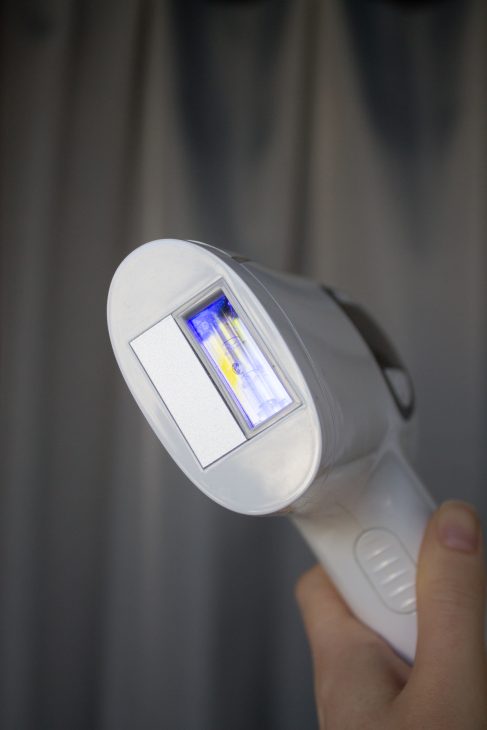
On the other hand, laser is a super-focused beam of light honed to a certain wavelength. A red laser beam for example only includes red wavelength light and nothing else. That means all the energy the light contains is highly focused at that one specific wavelength.
The benefits of IPL over laser: the less targeted approach
If both IPL and laser both work using the same principle of light to heat conversion, then what’s the difference? The answer is wavelength.
When all the energy is focused on just one wavelength as in lasers, only the specific parts of the skin that are absorptive of that light will be affected. This means lasers can be used as a super-powerful and targeted treatment. As the light can be tailored to not target certain wavelengths and thus skin tones, it’s safer to use them on darker skin types. That makes it ideal for all skin types and very advanced skin issues. But that power comes with more discomfort, narrower potential results depending on the kind of laser, and longer, worse downtimes. Lasers can also be very dangerous to the eyes and need to be treated with serious caution.
IPL is comparatively much safer than laser. As all the light energy is diluted across a variety of wavelengths, all different areas of the skin will be reached and various structures will absorb the light in varying degrees, but with less intensity. That means it’s a wider multi-targeted treatment for many skin concerns, with less pain and better healing. Though you don’t want to get an IPL flash near your eyes, there’s far less risk of permanent eye tissue damage. But compared to laser it will probably take more sessions to complete a treatment, and for some issues may never be strong enough.
IPL hair removal vs. skin rejuvenation
IPL is probably most well known for being a slow but permanent and relatively painless method of hair removal. It’s often called ‘laser hair removal’ (even though there really isn’t a laser involved). Over time, the repeated heating causes disintegration of the hair follicle that will weaken it each time it grows back, and eventually decommission it, making hairs thinner, then more spare, then altogether gone.
It’s a great method, but unfortunately for me, IPL hair removal relies on contrast. That’s so the dark hair root absorbs the light and generates heat there, while leaving your skin surface alone. Though I’m a pale girl, I have even paler hair. The light would not be able to “locate” the hair roots. If the strength were dialed up enough to heat up my light hair, it would also burn my skin – ouch. So IPL hair removal is out for us with a combination of light hair + light skin, or those with dark skin.
What is viable for my fair skin type, however, is the aforementioned pigmentation and redness treatment. Freckles, age spots, hyperpigmentation, broken capillaries, diffuse redness, all treatable. They are darker than my natural base skin tone and thus the IPL will lock on and heat these areas in particular.
Results and benefits of IPL for skin rejuvenation
The results of IPL in-office are CRAZY. Like, how is this treatment not more popular?! The main two things IPL really excels at doing are:
- broken capillary removal
- freckle/pigmentation removal
We’ve already talked in depth about how these kind results are achieved. But did you know that IPL can also be used to treat acne? It forms part of a treatment called ‘photodynamic therapy’, which uses light to stimulate certain reactions in the skin that kill acne bacteria. Specifically, a certain compound (porphyrins) in the bacteria are easily excited by light. Too much and they’ll produce oxygen and like in how free radicals badly age our cells, this will kill the bacteria. It’s a highly safe and effective way of eliminating acne bacteria while leaving the skin uncompromised.
P. acnes is particularly susceptible to 415nm and 630nm light. That’s blue and red, in case you were ondering. Many IPL lamps unfortunately don’t seem to get down low enough to that 415nm blue light range (I’ve got my LED lamp for that!). But IPL does usually cover the red light spectrum, which is the second most effective colour of light in destroying acne bacteria. So you should get some good benefits from it!
And finally, IPL can also cause recontracture of collagen fibres, restoring density and firmness to this skin. In this study, IPL was shown to be significantly effective in improving skin texture and wrinkles.
Who can/can’t use IPL (contraindications)
Best for:
- people with blotchy redness/visible blood vessels
- people with dark freckling, sun spots or small patches of pigmentation
- people with relatively problem free skin/no serious medical issues
Seek a professional:
- people with extensive or severe pigmentation or something like like melasma – there will likely be an underlying hormonal or medical cause and IPL cannot treat this
- people with large areas of redness like port wine stains
Not for:
- people who are currently tanned (naturally or with temporary product)
- people who are darker than Fitzpatrick skin type 4
- people with medical conditions, such as undergoing Accutane, gold therapy, herpes, or skin cancer treatment, those with light sensitivity, or a history of keloid scarring
- people with tattoos in the treatment area
For more on the safety of IPL at home, check out this resource.
My at-home IPL plan
What made me want to try IPL?
I’m obsessed with trying every skin care option out there and seeing what I like, what works for me, and just enjoying myself and having fun. It’s my hobby.
I’ve always been drawn to light therapy and have purchased an at-home LED lamp which I love (even though it makes me look insane). I’d spoken to my skin clinic about IPL several times, when they suggested it to treat my problem skin.
My skin background
Red marks (post-inflammatory erythema or PIE for short) from past acne are a constant bane of my life. They’re probably caused by a combination of simple shitty genetics and habitual skin picking. They don’t last too long, but I’d like to speed up their fading if possible.
Generalised redness is another big concern of mine. Mostly, I notice it around my nose, especially in comparison to my vitiligo, which makes it all the more obvious.
Uneven, mild freckling plagues me, mostly under my eyes. From being very fair and living in Australia, I have some unavoidable, very light freckles, as documented by my skin clinic here. Most of them I’m fine with, except mainly this patch under my right eye. It sits in just the right spot to look like a shadow from my eye bags. Fading these would be great!
I have one, big, broken capillary under my eye. I totally don’t know when I got it – I think in the past year or two – but it’s very visible (at least to me) and gives my eyes a red, tired look they don’t need. On the side of my nose, a smaller little blood vessel spot has also appeared.
I know my skin damage isn’t very advanced, but I’d like to hold off on more invasive treatments as long as possible. Now my skin is finally 90% clear from the acne I struggled with for so long, I’d like to see how close to really clear I can get.
Why choose to do IPL at home, not in-office?
With all that said, why don’t I just go to my skin clinic and have it done? Simply: price and access.
In office, IPL is whoppingly expensive. It can come in at literally hundreds of dollars a session. That’s an amount in the thousands for a full series. I live far away from my support system, all the way over here in Japan, and know to keep an emergency fund for unexpected occurrences. So I try not to spend all my money on skin care.
Where I live too there are very few dermatologists specialising in laser and light treatments, and absolutely none who specialise in non-Asian skin or speak English, for that matter.
After a little bit of thought and reading some articles about the markup of the beauty industry, I thought to look online to see what IPL devices were out there for personal use. And when I found one, it was on its way to me in no time. And here we are, 2 months and 6 treatments later.
Finally, I’m always underwhelmed by the quality of photos of skin treatment results. I love to binge photo after photo of skin treatments, but half the time they’re in different lighting, too far away, with makeup, bad angles, and missing before photos. I, however, have a big-ass camera, so I’ve been documenting the changes over the past 2 months in excruciating detail and up close – the way you look at your own skin. And I’m going to share the results with you.
How many treatments?
Big results can happen after just one IPL treatment, but usually up to 6-8 treatments are recommended. Why? Because all the energy from the light of your first treatment will be attracted towards the darkest pigment or biggest capillaries in the area and used up to heat it. So as your worst-offendending spots are removed, then all the light energy is free to focus on the next biggest one next time and so on. So the first session or two will show big results, removing a lot of the biggest, darkest pigmentation or biggest vessels. The later sessions will really perfect and refine the skin, removing tiny blemishes and creating an even, smooth base that will put you in a better off position for prevention the future.
Choosing an IPL device
If you choose to do IPL yourself at home, you do need to do your research and procure a quality lamp. The real risk in buying a shitty, cheap one is that it won’t work due to not being of a high enough power threshold. The in-office lamps come with big machines attached and larger, more powerful lights that can build up a bigger charge and release way more energy (joules) in each flash. More energy = more heat = better results. Too low of a heat created and there won’t be much change.
Now I’m not expecting much, because I know that low-power could mean low-results. But at-home IPL devices have been proven to be very effective for hair removal. I haven’t found quite as many studies into the use of them for pigmentation and redness. So, I thought it would be good to do a little experiment on myself and see what kind of skin results I could get.
One thing you should look for on your lamp is a cooling head. It’s a strip of metal that uses electricity to stay cool to the touch. Due to the way IPL works, for maximum safety you’ll need to cool the skin surface down to keep things safe and comfortable.
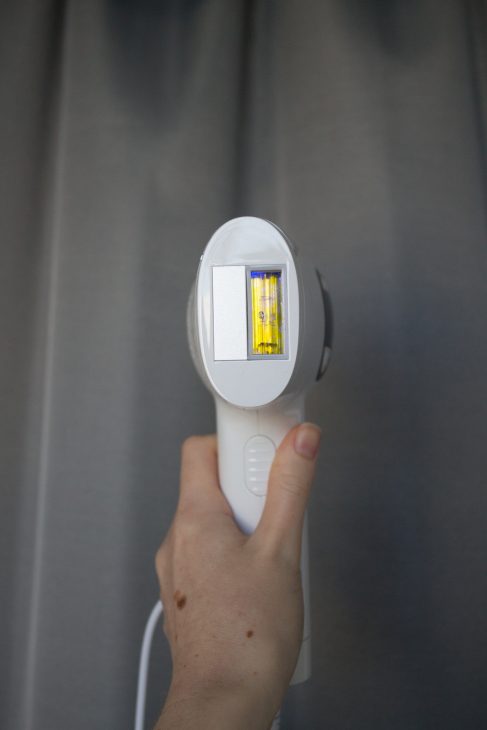
I went for a mid-range option like this one that cost me around $130. I didn’t want it to be unsafe, break right away or overheat.
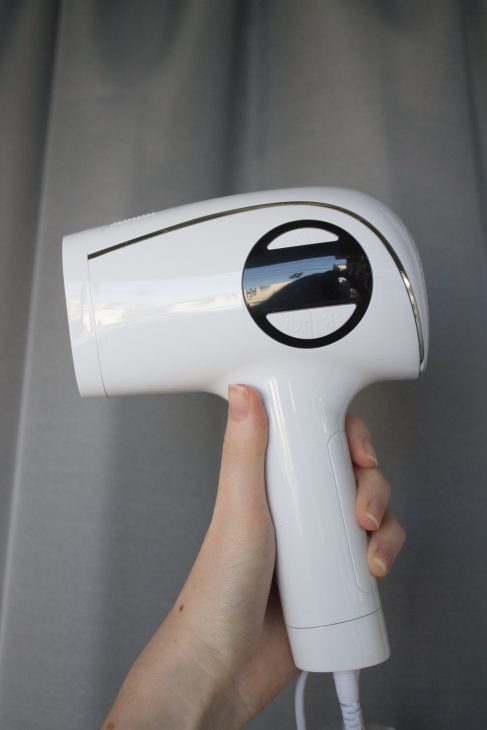
If you’re more concerned about choosing a reputable brand or longevity, Faustina, Remington and Philips all do great lamps with replaceable heads.
Note: All machines should have documentation somewhere of the energy output in joules per cm squared. The higher, the better.
You also need eye protection. That’s sunglasses or tanning goggles. And of course, never look into the device or fire it while it’s not held against something. Most will have a safety feature preventing them from firing unless they are completely pressed up against the skin.
The IPL procedure explained
Preparation
First comes prepping the skin. Cleanse well, and remove any self tan if you have any on. If you don’t, you can burn your skin. Don’t apply anything else, just leave your skin to dry for a few minutes.
Put on your goggles and you’re good to go.
I began my first session by testing it on my arm. I then left it alone for 30 minutes to ensure I wasn’t having any unexpected reactions and the device was functioning as expected. All having gone smoothly, it was time to go in on my face.
Process
The sensation of the IPL machine is like a quick, warm snap. Kind of like a mosquito bite zapper if you’ve ever used one of those (or was it just me?), or like someone just flicked you in the face. A little bit startling but truly not at all painful. On worse areas the sensation is stronger as larger patches of pigment and blood are coagulated. Once you get into a rhythm, it’s all good.
If you have dark hair, be very careful to tie it back and don’t flash the lamp over it. It’ll vaporise (read: burnt hair smell) and potentially never grow back.
Aftercare steps
With IPL, there is no downtime. You’ll finish the treatment with only a sunburned appearance, slightly red and perhaps sore for a few hours because of the heat. The treated areas (freckles or sunspots in particular) may become more noticeable and darker as they crust and heal over the next 1-3 days. Imagine like turning all your pigment up to level 100. Don’t panic though! These darkened areas then disappear completely several days later, leaving you with your final improved result. Don’t pick at any scabs if you do get them. I was lucky and barely experienced any of this, probably because of the low-power at-home lamp I used.
Otherwise, there’s not a lot of aftercare to do! I simply applied my usual hydrating gel products and went about my day, spending it at home. Here’s my current skin care regimen, which is exactly what I used after my IPL treatments. Out of caution, I skipped the actives like acids and retinol for the rest of the week. I was also super duper careful with sun protection – this is not the time to go for a beach vacation, as when the old pigments are lost there will be fresh and delicate skin underneath which is already wanting to re-darken. Otherwise, you’re all good to go in with whatever makeup and other products you want.
Once any sign of healing had gone (min. 1 week), I was good to go for another session.
Maintaining IPL results
And you do need to continue treating to keep results. Not that IPL is temporary, but naturally no matter what you do, if your skin and lifestyle is conducive to them, pigment and capillaries will come back and you’ll likely need to repeat a series of sessions again in 6 months to a year.
Long term, I will likely keep up these treatments. I believe every little bit contributes to overall skin wellness and everything I can do to maintain and support my skin between bigger in-office treatments is a plus. Now I have the device, it’s at no cost to me to incorporate IPL once or twice a month when I feel like it, and do a full series of back-to-back treatments in the winter.
My IPL results
Photos of my 2 month IPL transformation (so far)
Now this post has been a long time coming; I started the sessions 3 months ago in January and a LOT has happened since then. But during that time I did manage to make room for 6 sessions over 2 months. Let’s see what came of it:
(Before on left, after on right)
Thoughts
I hope you agree that the after photos are objectively better than the before!
Though unfortunately I can’t see a huge difference in my biggest broken capillaries or freckles (which likely need some full-power sessions at a skin clinic), I can see an improvement in the appearance of my skin as a whole. Specifically, there’s a big difference in my general redness and PIE marks. My skin looks clearer and calmer in the after photos, especially on my forehead, outer cheeks and chin.
In conjunction with my new and improved routine, I believe IPL is helping to keep my skin clear, encourage faster healing, and work on some of that deep-down pigmentation. I can’t wait for my next visit to my skin clinic so I can take another set of professional photos to document the progress I’ve made.
So that’s all on this massive post all about IPL! I hope you’ll consider this awesome treatment for yourself, be it at your skin clinic or at-home. Are there any treatments or procedures you can’t live without?

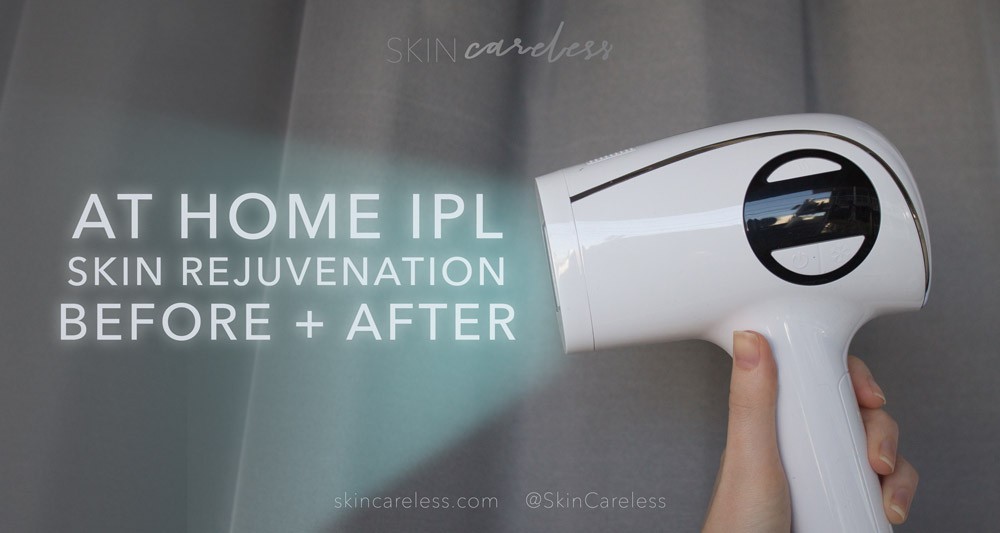
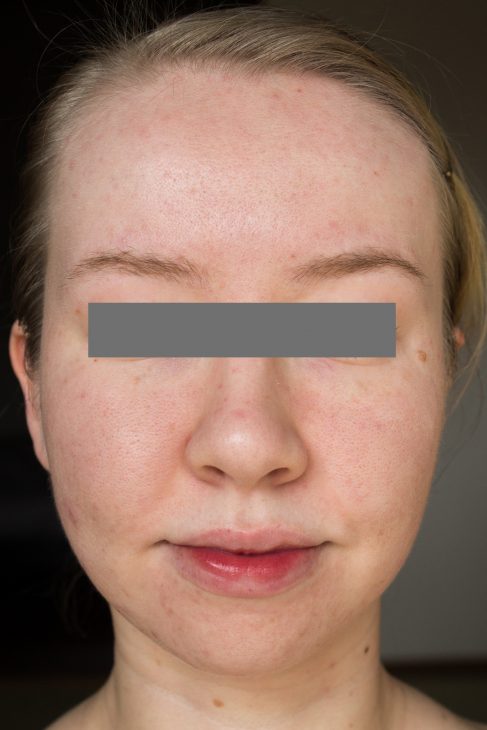
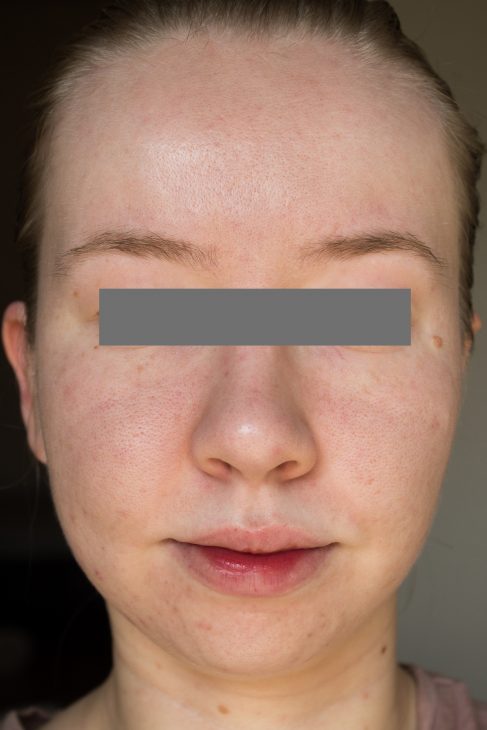
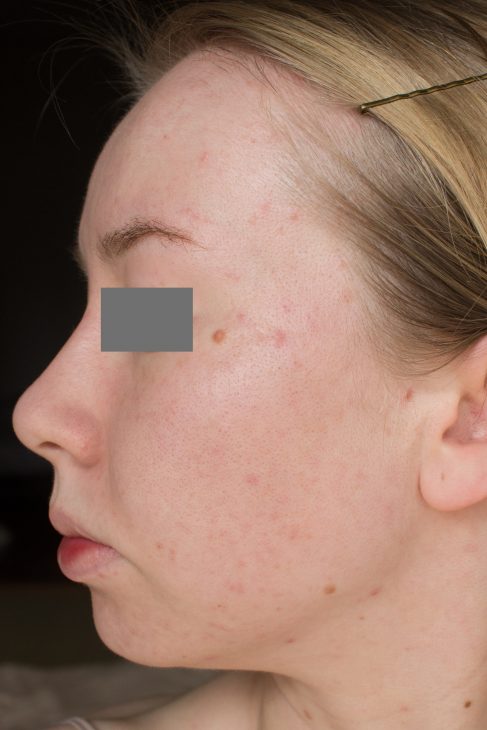
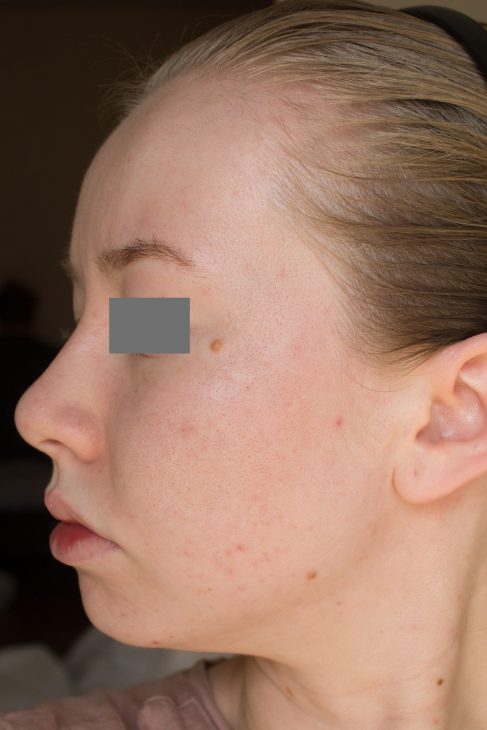
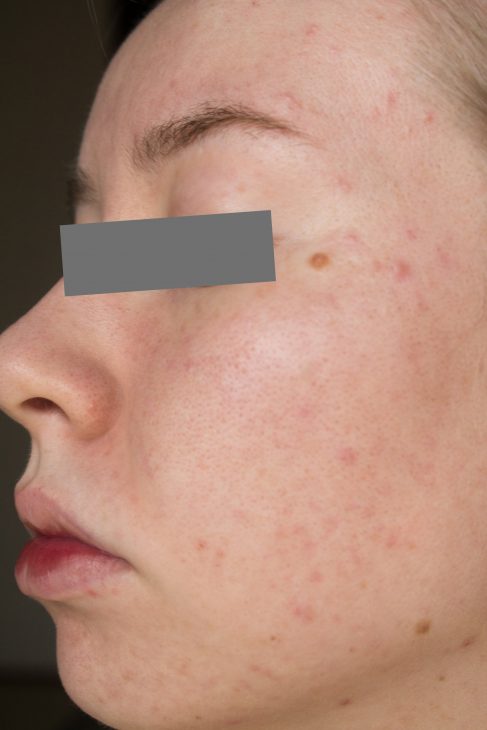
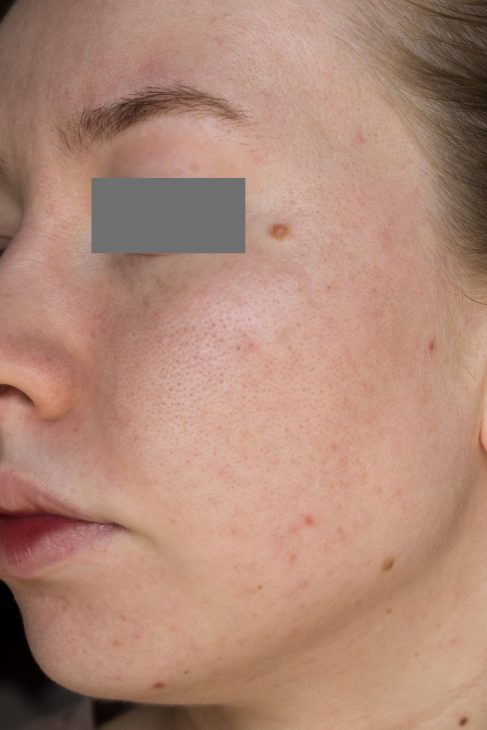
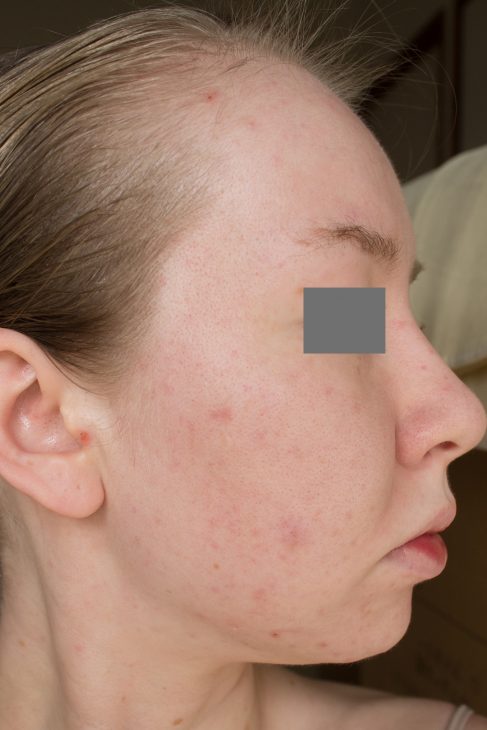
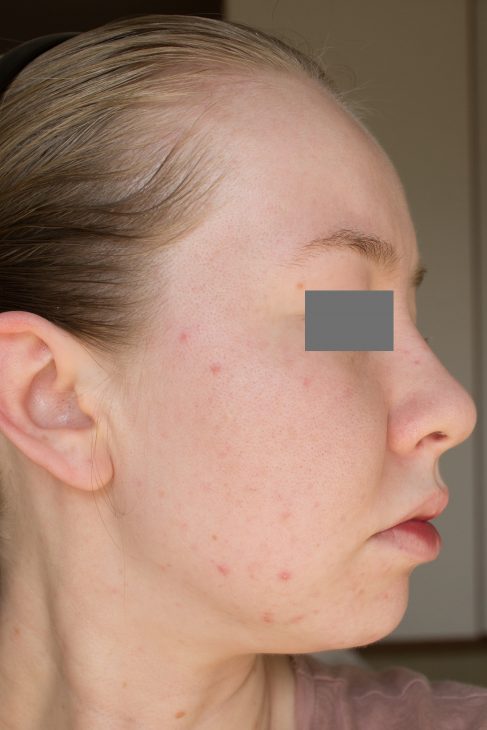
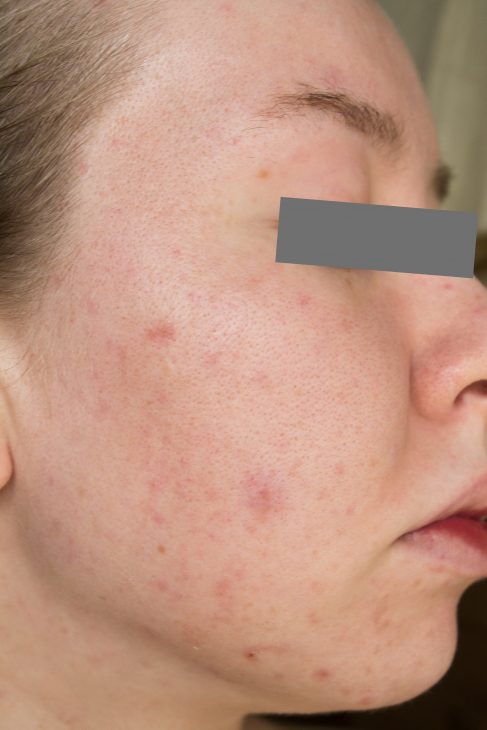
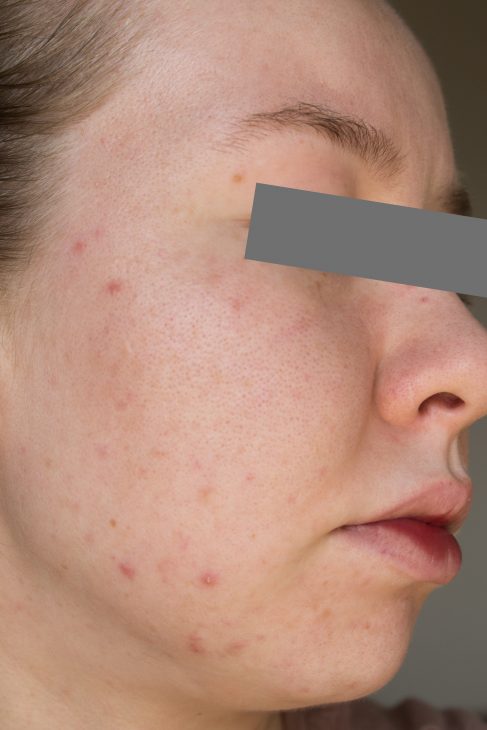
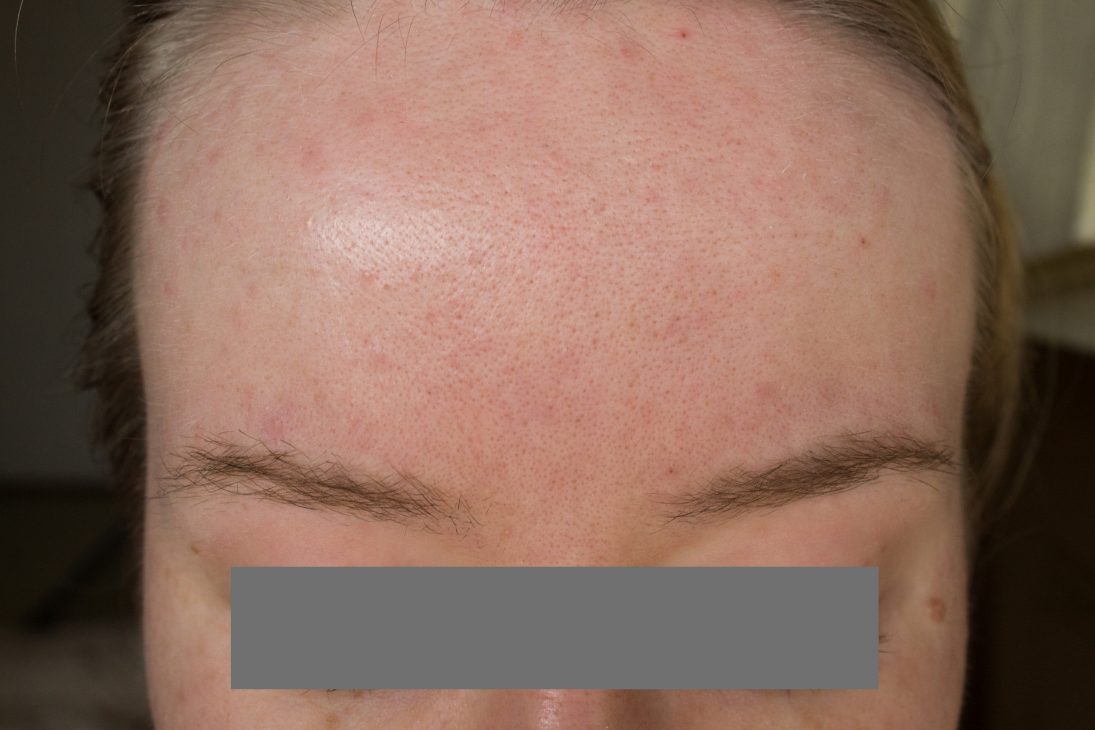
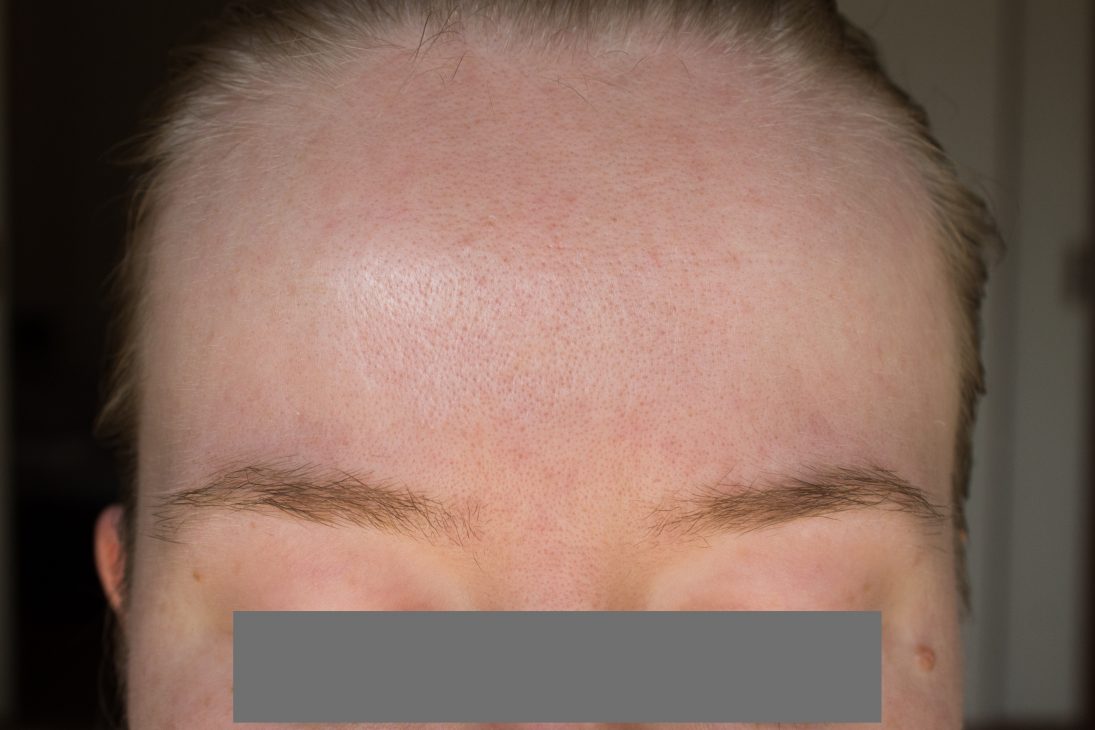
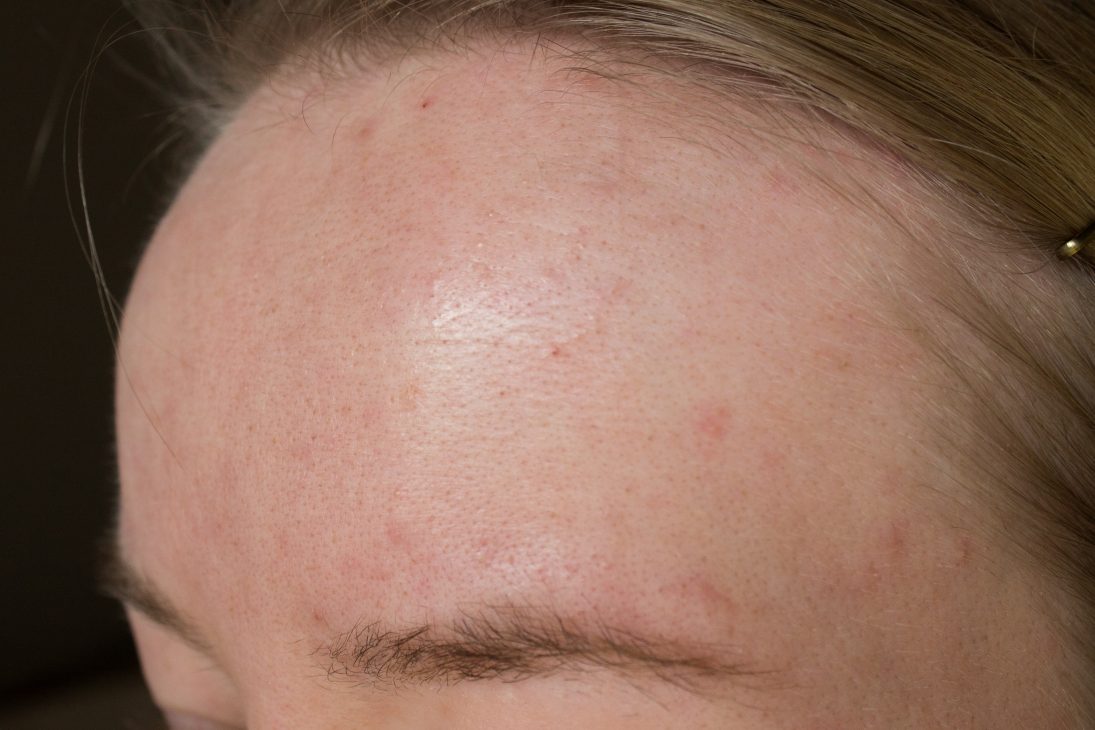
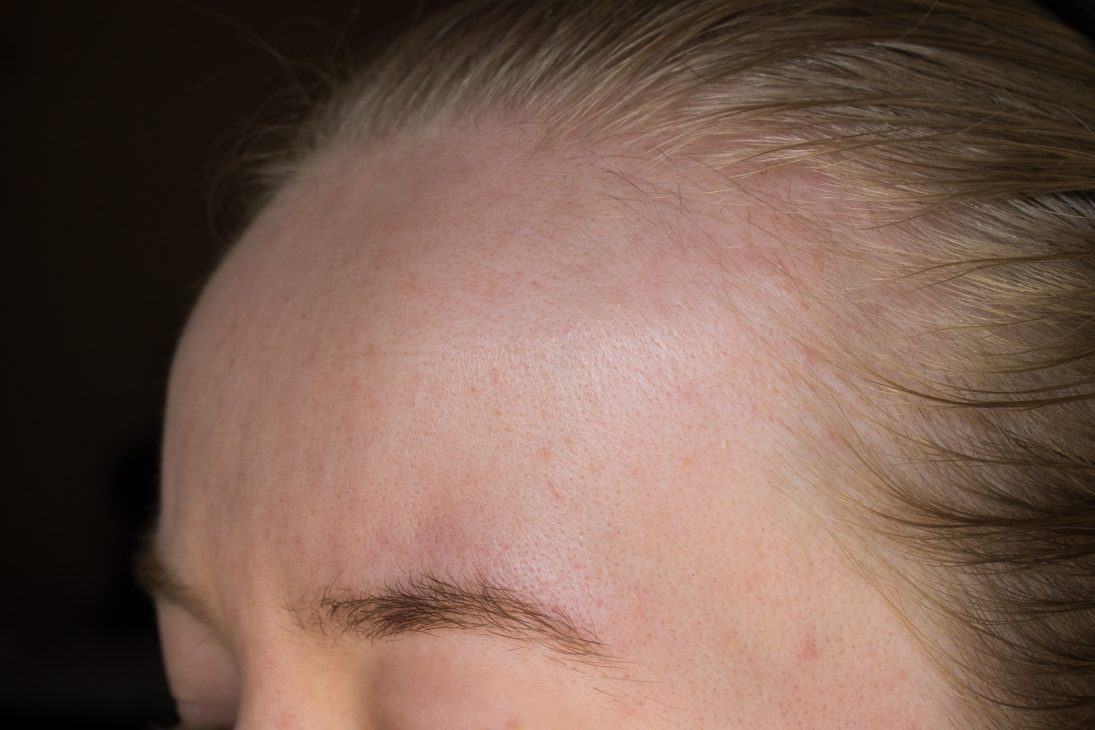
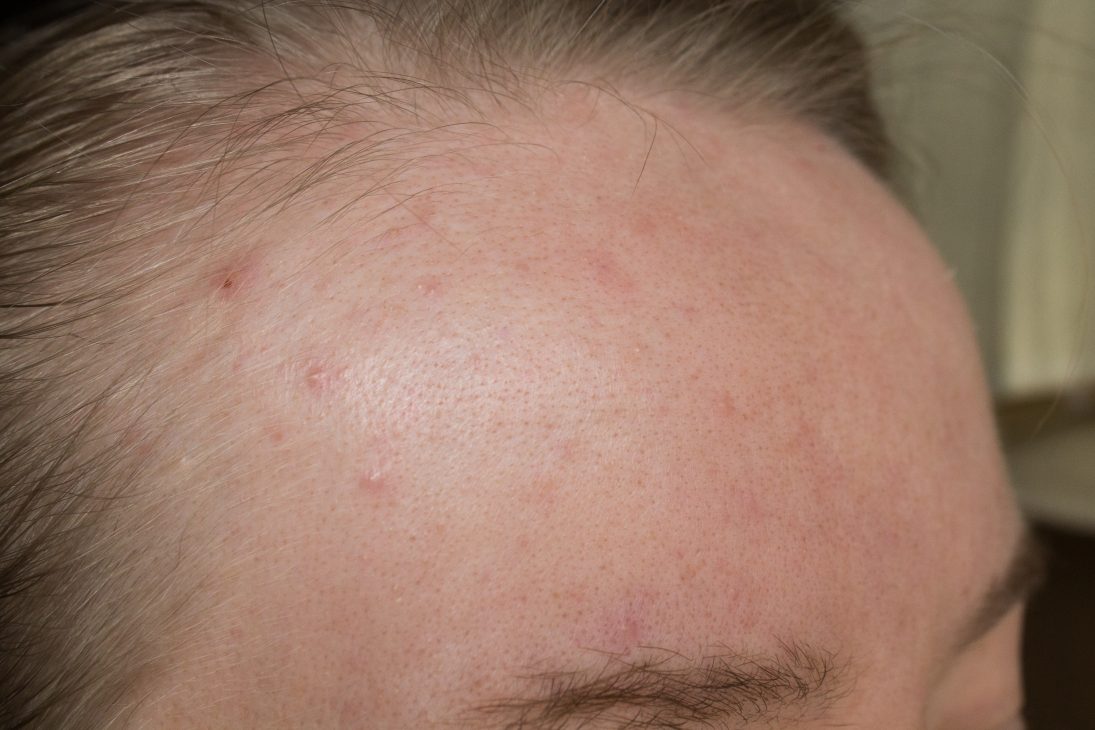
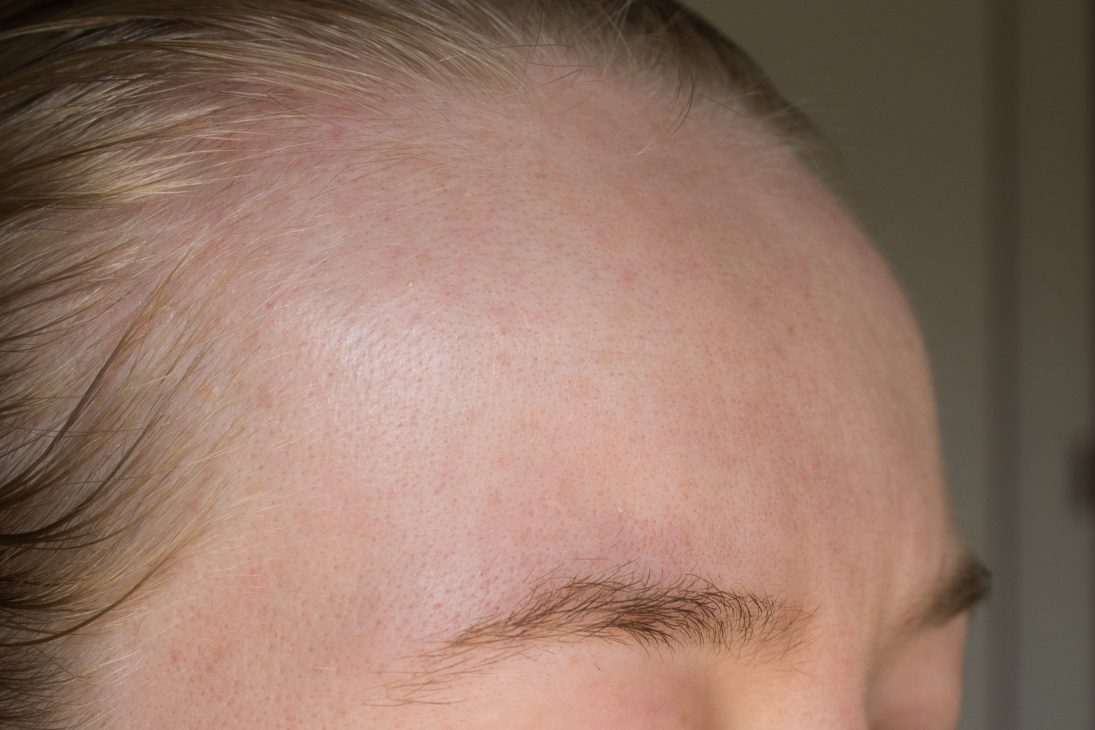
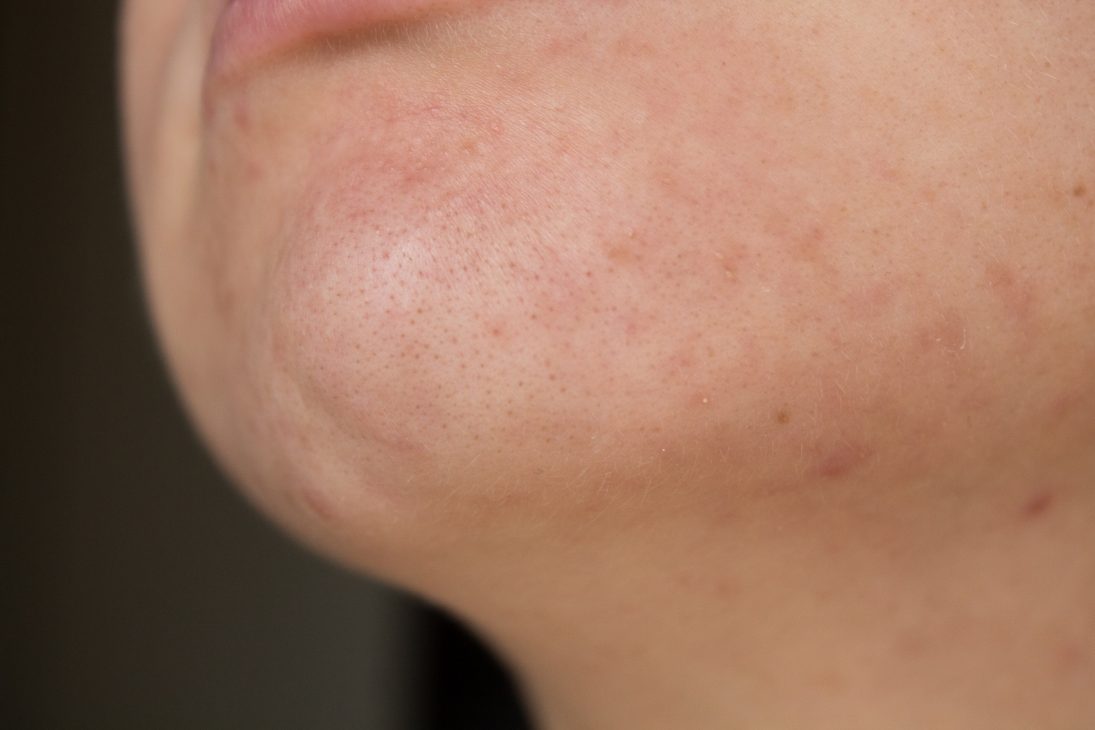
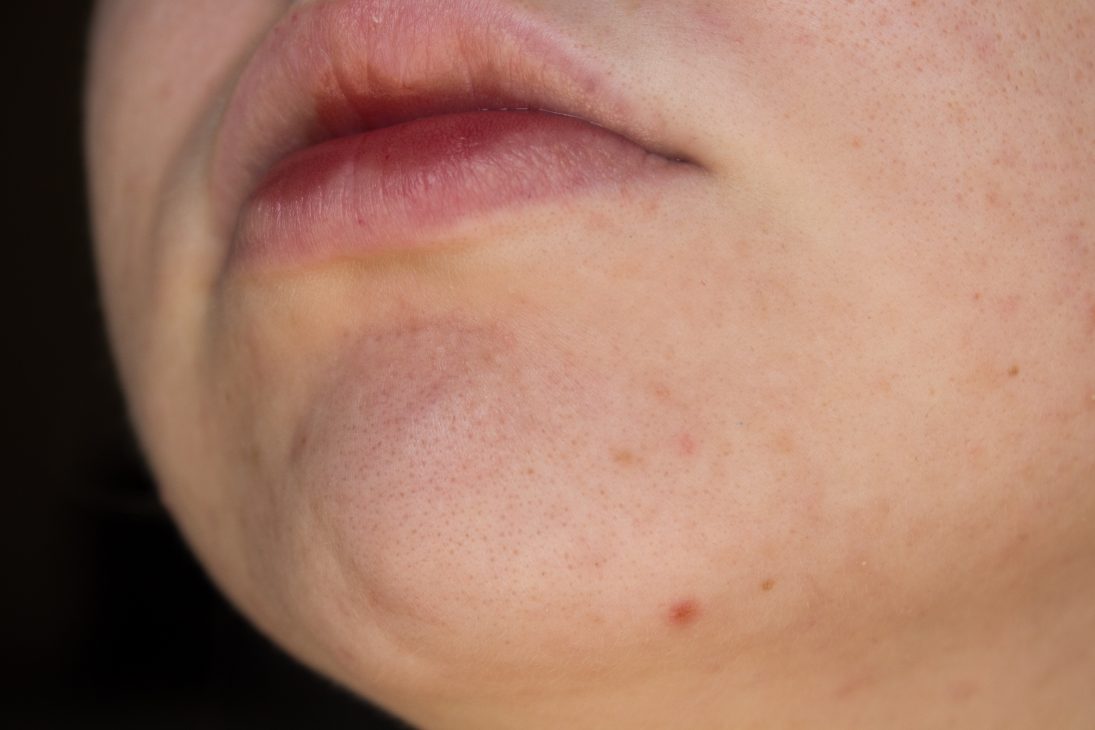
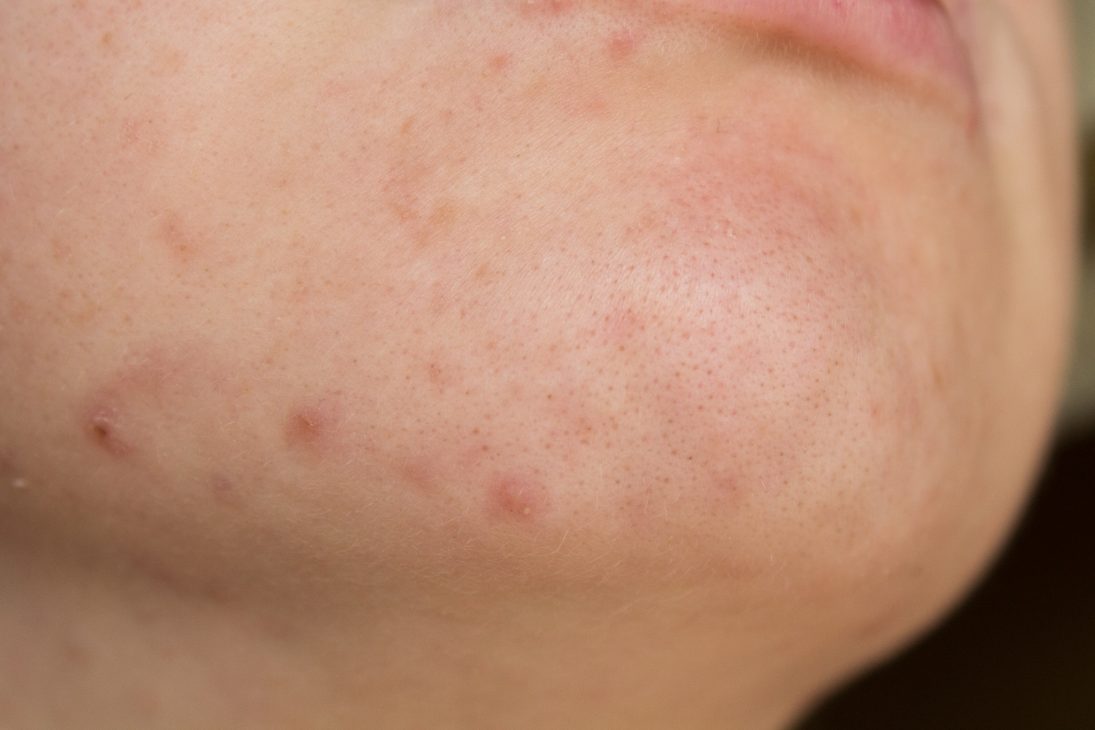
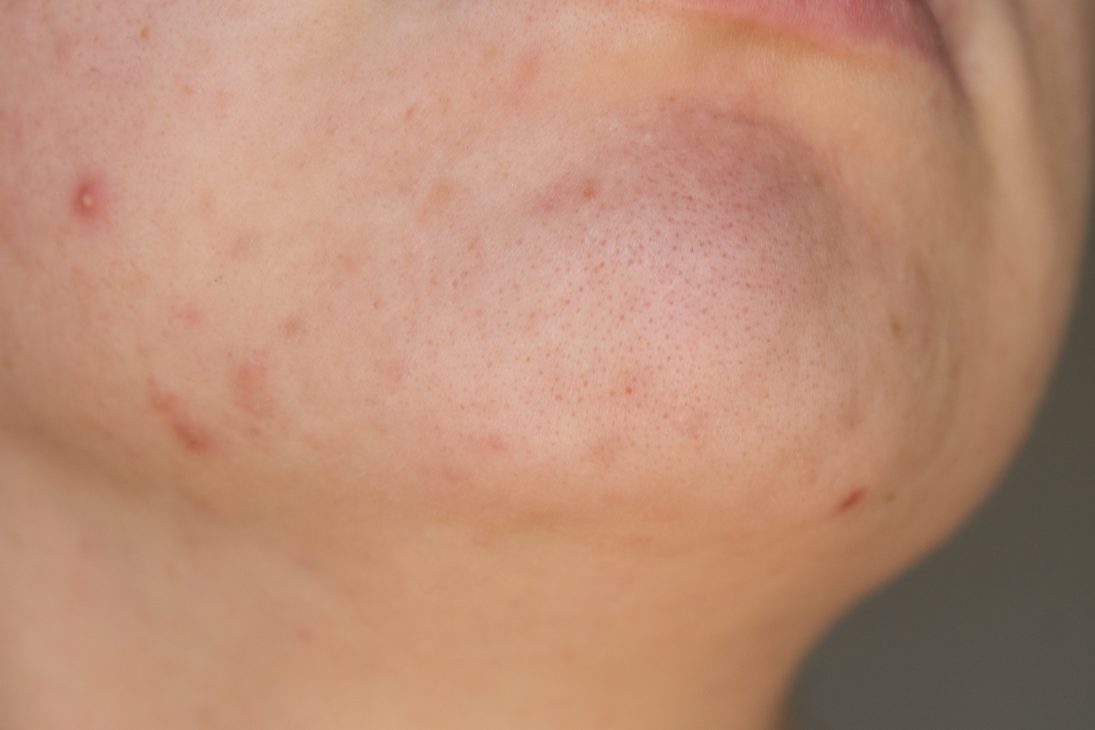
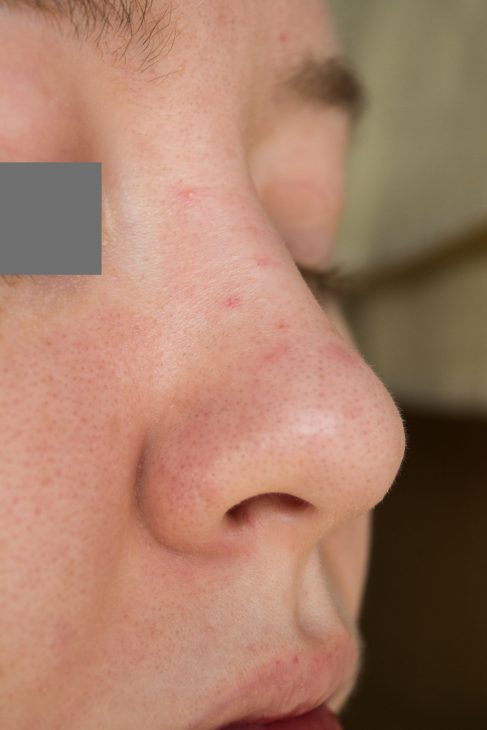
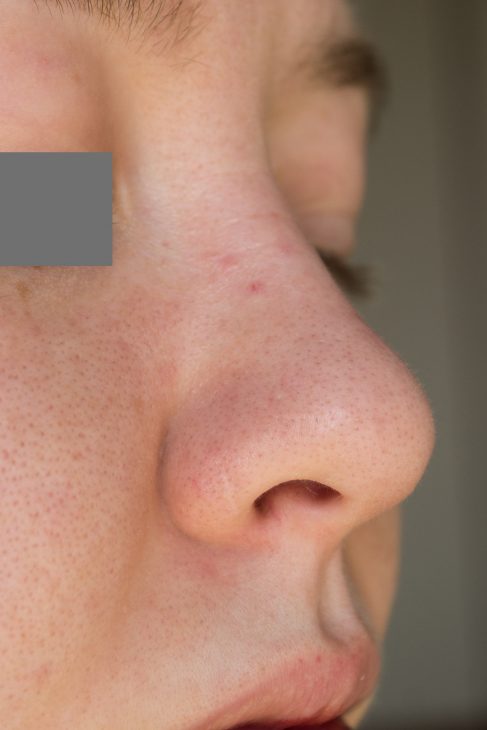
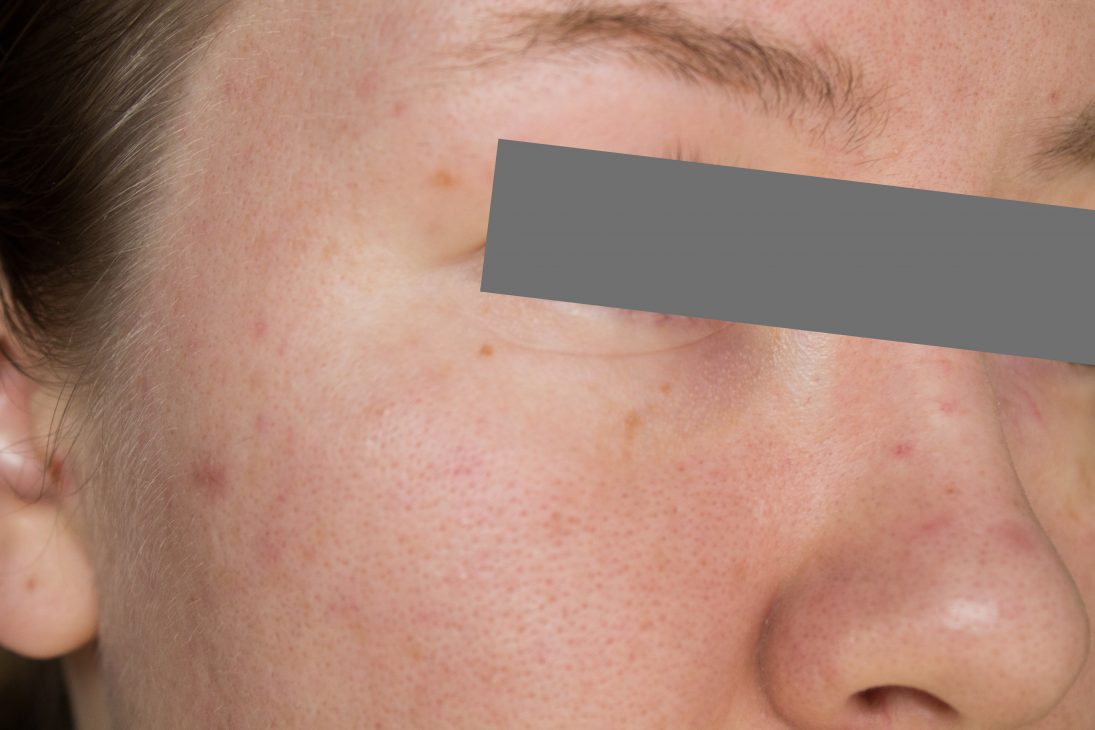
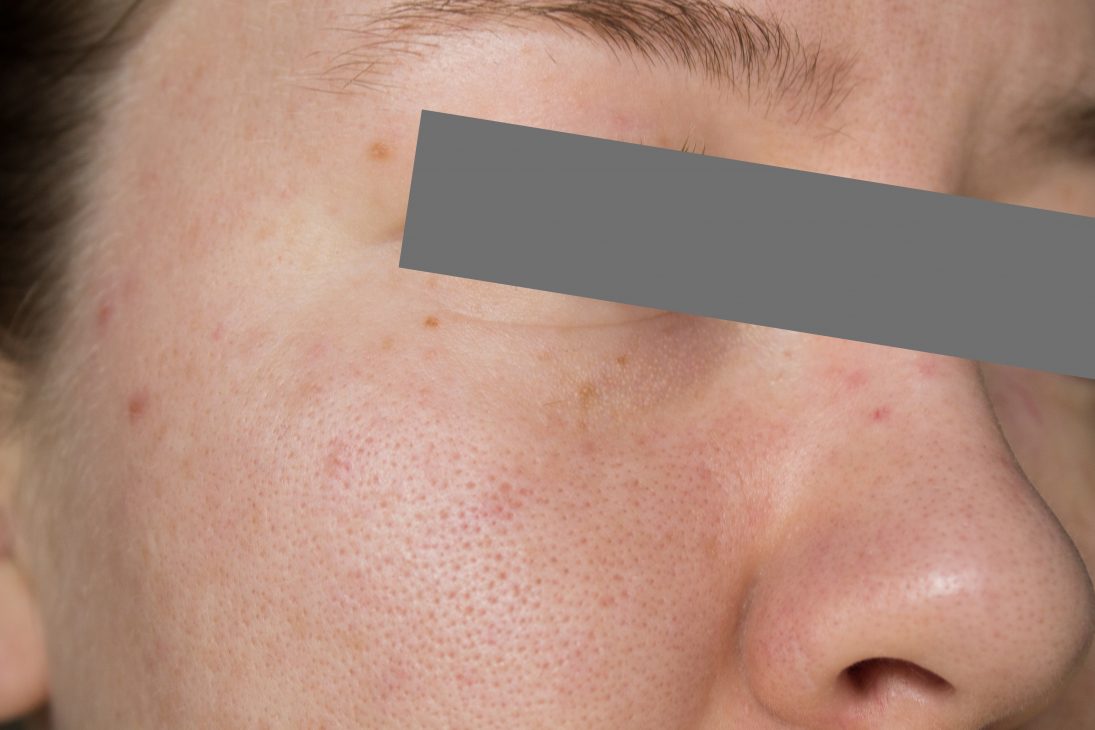
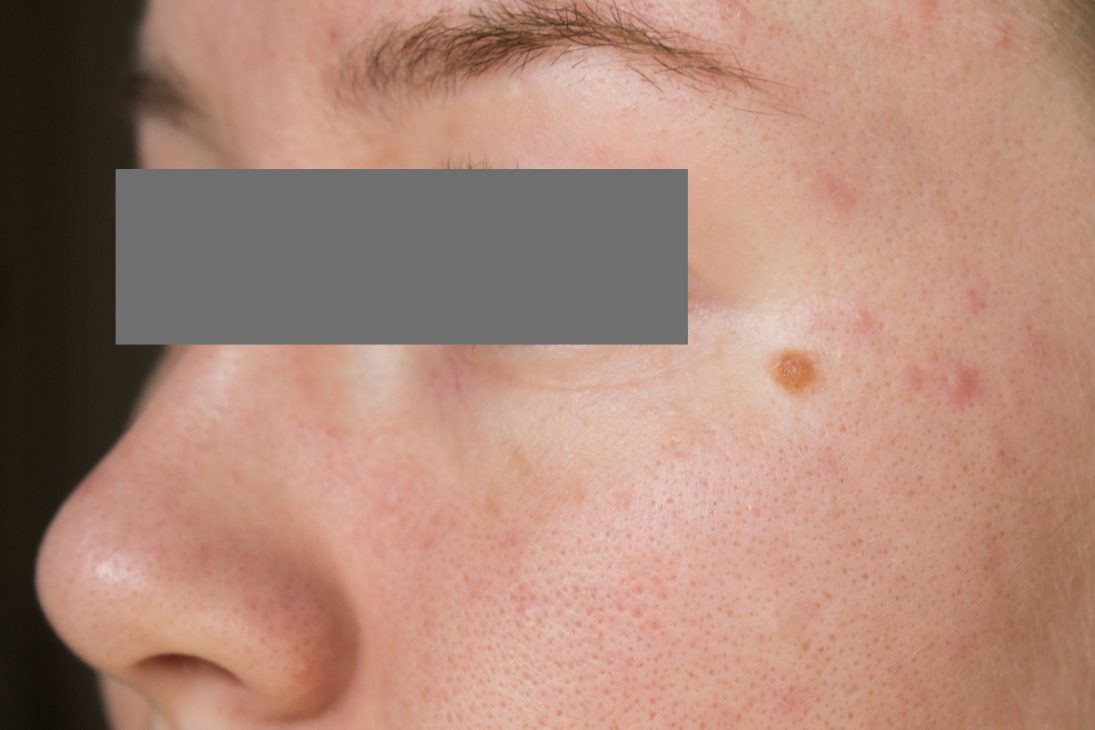
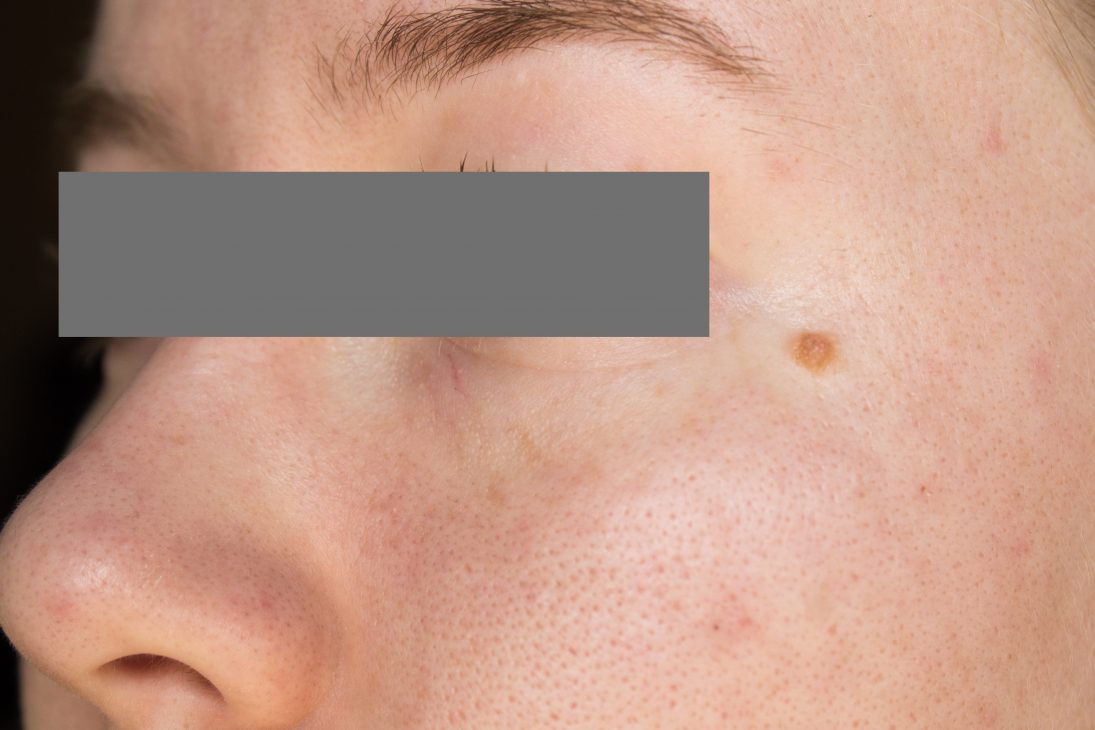
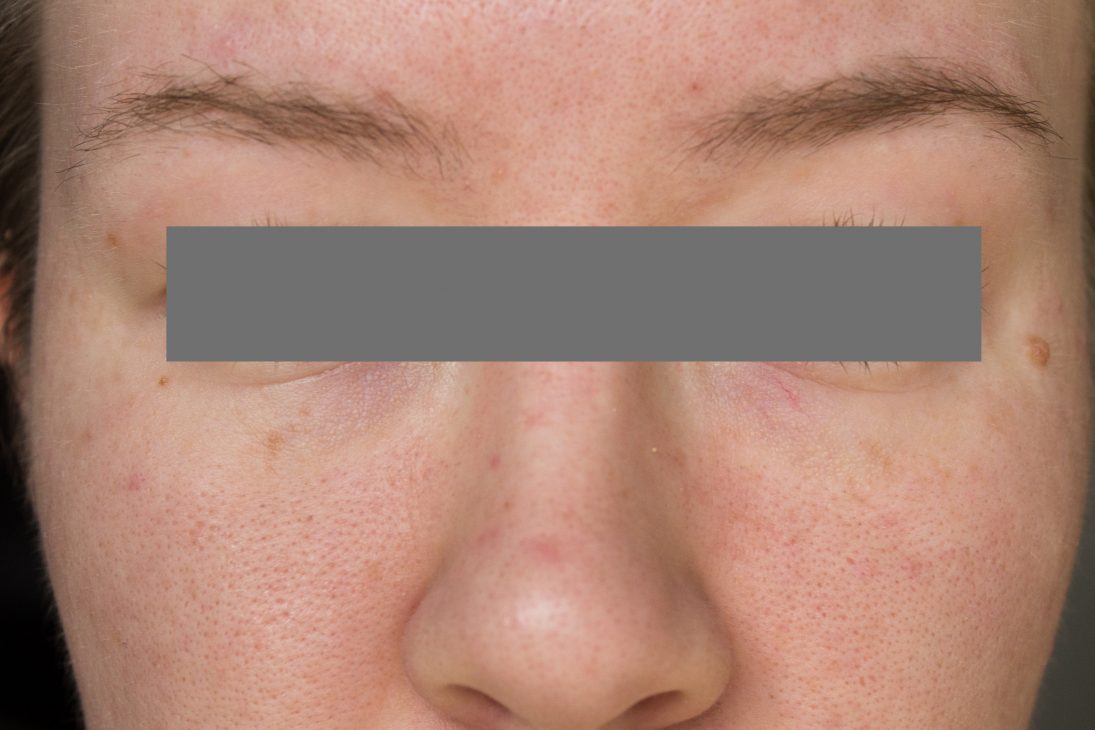
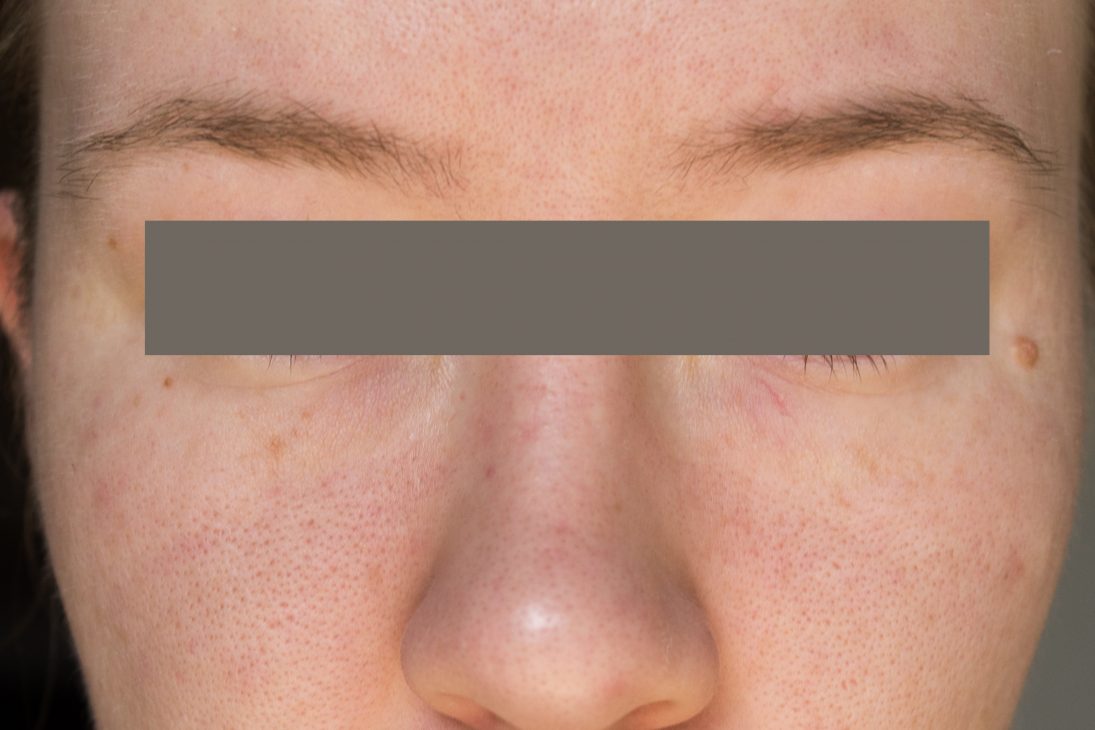

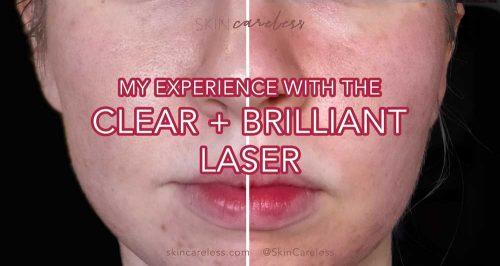
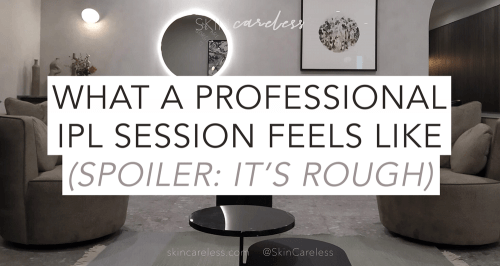
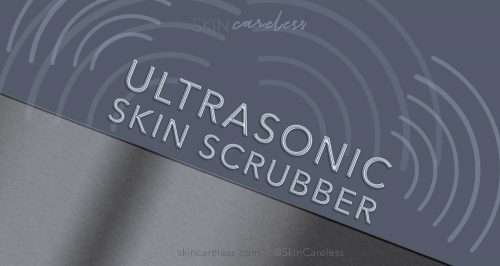
[…] I beat fungal acne, my new routine has taken care of 75% of my acne and dehydration, and lately I’ve been documenting my skin and new treatments in excruciating detail, I’ve noticed that pigmentation is one of my biggest concerns. I have very fair skin and a lot of […]
[…] – which I’ve already dedicated a hugely informative post to – is on the forefront as a non-invasive, safe possible treatment for stretch marks. It’s a […]
[…] you may know, I’ve dabbled with at-home Intense Pulsed Light facials in the past. In other words, I’ve bought a big lamp thingy and zapped myself for science and for better […]